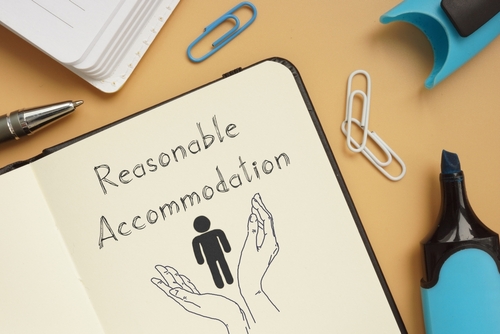Complying with the requirements of the Americans with Disabilities Act (ADA) has long been an area of special concern for employers, their HR leaders, and managers. The basic intent is to ensure that companies accommodate any reasonable needs that disabled workers may have.
Accurately applying the principles of the ADA, though, is anything but basic. It starts with what seems like an easy enough consideration: reasonable accommodation.
What Are Reasonable Accommodations?
Under the ADA, a reasonable accommodation is a modification or adjustment to a job, work environment, or company policy that will allow an employee with a disability to perform their essential job functions.
Accommodations are intended to both allow employees to work effectively and maintain their jobs, while also not causing significant difficulty or expense to the employer.
Common Examples of Reasonable Accommodations
Many accommodations are straightforward and low-cost. For instance, some of the most common include:
- Allowing employees to make flexible work arrangements that might allow for remote work or modified work schedules.
- Providing various types of assistive technologies to help employees perform their duties—like screen readers, voice-to-text software, or ergonomic keyboards.
- Making physical adjustments to the workplace to accommodate employees with physical disabilities. For example, installing ramps, modifying desks, or adjusting workspace layouts.
- Adjusting policies to address the special needs of employees with disabilities, like allowing extra break time for employees with medical conditions requiring greater rest periods.
What Is Considered Unreasonable?
While employers must make good-faith efforts to accommodate employees, they are not required to implement accommodations that cause an “undue hardship”—meaning a significant cost or disruption to business operations.
Examples of unreasonable accommodation include:
- Removing a critical job duty instead of finding a way to accommodate the employee so they could perform the duty.
- Accommodations that would require excessive cost or burden. For instance, an employee requesting that a small business install an elevator.
What is the Employer’s Responsibility
Employers are required to work with employees to find a mutually agreeable, and reasonable solution that would allow them to retain their job.
While not all requests are automatically reasonable, even those that seem unreasonable should be evaluated carefully and in good faith before being denied. It’s also important to maintain proper documentation of these requests and efforts.
Because ADA compliance violations can carry significant penalties it’s important for companies and their representatives to take compliance seriously. Here we’ve offered a general overview of ADA compliance issues. It’s important, though, to always seek legal advice about any ADA compliance questions and concerns that might emerge.
Lin Grensing-Pophal is a Contributing Editor at HR Daily Advisor.
The post <strong>What Is a Reasonable Accommodation Under the ADA?</strong> appeared first on HR Daily Advisor.
